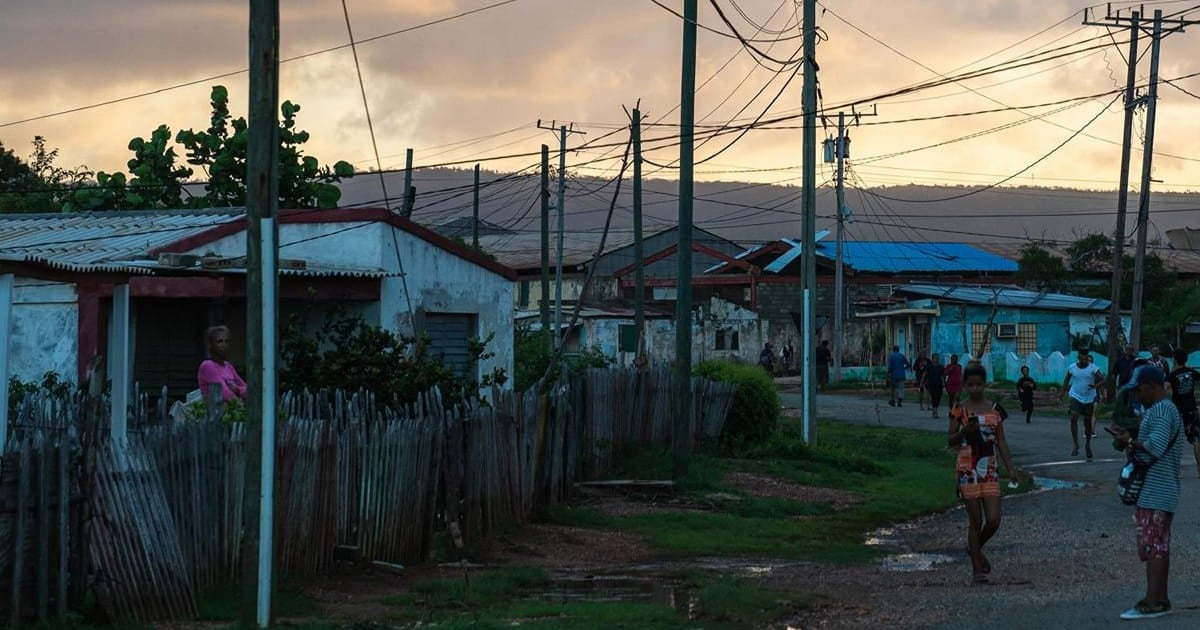
Related videos:
The Electric Union of Cuba (UNE) continues with scheduled blackouts following the electrical collapse, despite having confirmed that the National Electric System (SEN) has been restored throughout the country.
In their report this Monday, they noted that on March 16, service was disrupted 24 hours a day. The maximum outage reached 1,601 MW at 7:30 PM, but it did not coincide with peak hours.
The availability of the SEN at 07:00 hours on this Monday is 1,900 MW, while the demand is 2,600 MW, resulting in an impact of 736 MW. During the noon period, an impact of 1,200 MW is expected.
Units out of service
The UNE reports that unit 1 of the CTE Habana, unit 6 of the CTE Renté, and unit 2 of the CTE Felton are out of service.
In addition, unit 6 of the Mariel Power Plant, unit 2 of the Santa Cruz Power Plant, units 3 and 4 of the Cienfuegos Power Plant, and unit 5 of the Renté Power Plant are under maintenance.
In Cuba, limitations in thermal generation persist, amounting to 481 MW. Additionally, 40 distributed generation plants with 158 MW affected by fuel shortages are out of service.
The forecast for this Monday brings more blackouts
During peak hours, the regime expects to achieve the entry of unit 6 at the Mariel CTE with 95 MW. If successful, it is estimated that there will be a availability of 1,995 MW and a maximum demand of 3,280 MW, resulting in a deficit of 1,285 MW and an impact of 1,355 MW.
In Havana, they plan to impact customers in block #1 from 10:00 AM to 2:00 PM, while block #2 will be affected from 11:00 AM to 3:00 PM. After that, attention will shift to block #4, which will be affected until 7:00 PM. Block #3 will be impacted from 6:00 PM to 10:00 PM.
On Sunday night, the Presidency of Cuba confirmed that, after 48 hours of disruptions, the SEN is now connected from Pinar del Río to Guantánamo. However, they acknowledged that there are still "provinces that are experiencing disruptions".
The Guiteras Thermal Power Plant was connected to the National Electricity System this Sunday
On Sunday, the reincorporation of the Antonio Guiteras Thermoelectric Power Plant (CTE), located in Matanzas, was confirmed and has been crucial in this process of recovering the electricity supply.
This strengthened energy generation and the gradual restoration of service across the national territory. Rubén Campos Olmos, director of the thermoelectric plant, confirmed that the synchronization was successfully completed and that electricity generation will increase gradually.
Since reaching 60 MW, the thermoelectric plant has managed to operate independently without the need for external energy from the electrical system, consolidating its operational independence. In coordination with the National Load Dispatch, it was announced that it can reach 200 MW, provided there are no technical setbacks.
The Cuban government announced that it would take advantage of the mass blackout on Friday to advance maintenance work at the plant that was originally scheduled for next week.
Frequently Asked Questions about Power Outages in Cuba and the Energy Crisis
Why do blackouts continue in Cuba despite the restoration of the National Electric System?
Blackouts in Cuba continue due to limitations in electricity generation capacity, even though the National Electric System (SEN) has been restored. The lack of maintenance, breakdowns in generation units, and fuel shortages are critical factors preventing the country from meeting its energy demands.
What are the main causes of the energy crisis in Cuba?
The energy crisis in Cuba is due to breakdowns in several thermoelectric units, lack of adequate maintenance, fuel shortages, and outdated electrical infrastructure. These issues have led to a significant deficit in electricity generation capacity, resulting in prolonged blackouts across the country.
What role does the Antonio Guiteras Thermal Power Plant play in the recovery of electricity supply in Cuba?
The Antonio Guiteras Thermoelectric Power Plant is crucial for the recovery of electricity supply in Cuba due to its generation capacity. However, its operation has been intermittent due to breakdowns and lack of maintenance, which has complicated the stability of the National Electric System.
How does the energy crisis affect the Cuban population?
The energy crisis severely affects the daily lives of the Cuban population, causing interruptions in basic activities such as cooking, using appliances, and preserving food. Additionally, power outages impact essential services such as hospitals, schools, and telecommunications centers.
Filed under: